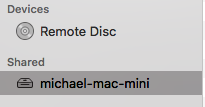I´ll tell a little bit more about my VPN setup. At home I´ve kept the service provider router and installed my own behind it, creating a DMZ but I won´t give details on this, just the VPN that should be easier to configure.
My router is an Asus that I´ve bought 2 years ago. I like their routers, because has a good performance and has a lot of features. I won´t talk about other features. I believe that every recent Asus routers includes VPN server and client, even the simpler ones. I´ve installed at my dad´s house an old router that I bought in 2012 and replaced with this one, and already had VPN server. The older models, have PPTP VPN, and the newer ones have PPTP and OpenVPN. On these routers are possible to change firmware to include new features.
Don´t matter the brand of your router. What matters is if it has a VPN server feature. Configuring any of that should be similar.
Let´s talk about the VPN.
VPN means "Virtual Private Network". Basically, it extends your private network to a remote location. This is possible, because it creates a tunnel protectec by chryptographic algorithms and all your comunication flows inside this tunnel, mantaining your data safe. There are a few different VPN configurations based on different protocols, but I´m talking about the 2 of them present in my router, PPTP and OpenVPN.
PPTP means Point-to-Point Tunnel Protocol. It creates a virtual interface that can be accessed through an internet connection using an user/password combination. It has some age already and it´s not the safest VPN protocol, but it´s surely better than nothing, and it´s still acceptable for home use. In Microsoft´s implementation, that is the the one used by asus, authentication method is based on MS-CHAP and MS-CHAPv2, and uses Microsoft Point-to-Point Encryption (MPPE). It creates a cryptographic tunnel between both endpoints, so data traffic between your remote device and home should be protected, as you are inside your private network.
MPPE-128 can give you a certain level of security, but it´s obsolete. Some mobile vendors, like Apple doesn´t allow their devices to connect to a PPTP VPN natively anymore. I believe that this is because in 2012 an MS-CHAPv2 key was broken with a brute force attack after 23 hours. So, it´s not impenetrable, but who would spend lots of hours to break in a home network? Maybe some crazy guys, who knows.
To create a VPN based on this protocol, all you have to do is define the authentication (MS-CHAPv2), encryption (MPPE-128) and a user/password combination. Then, you should use any PPTP client to connect. Windows offers a native one. I don´t know about other devices, but for shure there are lots of apps to connecto to PPTP.
OpenVPN is a VPN based on open source, that works in a different way than PPTP on these routers. I´ll not detail all the features, only the ones that addresses our purpose here.
Basically, you define a series of rules, chose between an RSA 1024 or 2048 encryption, create users and passwords, create a certificate and an encription key and then you export these settings to a file. With this file plus the user/password combination you can access your entire home network, and so your octoprint device from anywhere in the world.
After that, you install OpenVPN Client software on your device you intend to access your network from, import this file, add the user and password and connect to your home network.
For both methods to work, you need to have a static IP or use a Dynamic DNS (DDNS) service.
Another use for your home VPN is to protect sensitive data when you are in a public hotspot. You can connect to your VPN before access sensitive information.


